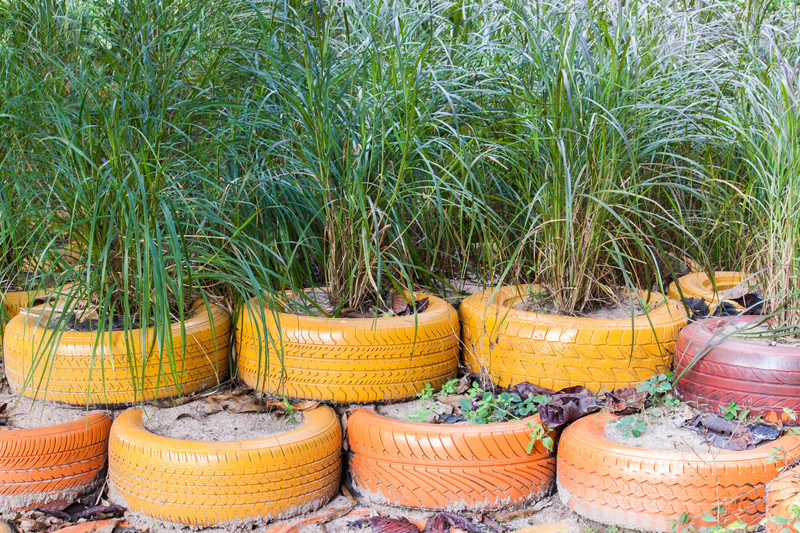The Ultimate Guide to Recycling Kitchen Pots and Pans
Is your kitchen cluttered with old pots and pans that have seen better days? Wondering what to do with cookware that's scratched, damaged, or just outlived its usefulness? You're not alone! Every year, millions of kitchen utensils end up in landfills, but it doesn't have to be that way. In this comprehensive guide, we'll explore the best ways to recycle and responsibly dispose of your old kitchen cookware--from nonstick frying pans to stainless steel stockpots. Learn how to give your tired pots and pans new life, help the environment, and even unleash your inner creativity!
Why Recycle Kitchen Pots and Pans?
Kitchenware isn't like everyday plastic or glass packaging--it's a unique recycling challenge. Old pots and pans are typically composed of mixed materials, including metals, plastics, and sometimes chemically treated coatings. Throwing them in the trash contributes to landfill waste and squanders valuable resources.
Recycling kitchen cookware is important for several reasons:
- Reducing landfill waste: Metal pans are not biodegradable and can take centuries to break down.
- Conserving resources: Metal is 100% recyclable, which means fewer raw materials must be mined.
- Preventing chemical leaching: Nonstick coatings and plastics in old pans can leach harmful chemicals into soil and water.
- Supporting the circular economy: Recycled metals become new products, reducing environmental impact.

Are All Pots and Pans Recyclable?
The answer is both yes and no. Most metal cookware--such as stainless steel pans, cast iron skillets, and aluminum saucepans--are highly recyclable. However, there are caveats:
- Nonstick pans: These pose a recycling challenge due to their PTFE (Teflon) coatings.
- Plastic handles or lids: Many recycling centers require these elements to be separated first.
- Mixed materials: Cookware with glass lids, rubber grips, or silicon inserts may not be accepted as-is.
Always check with your local recycling facility about their requirements before dropping off kitchenware.
How to Prepare Kitchenware for Recycling
Proper preparation is crucial for effective recycling. Taking the right steps increases the likelihood that your kitchen items will be accepted and properly processed.
- Clean your pots and pans. Remove all food residue and grease. Rinse them thoroughly and dry before recycling.
- Separate different materials. Take off plastic, silicone, or rubber handles and lids. Most recycling centers want only the metal portions.
- Remove nonstick coatings if possible. Some scrap yards may request that Teflon coatings be removed from non-stick pans. If you're uncertain, ask your recycler about their policy.
- Bundle similar metals together. Sorting stainless steel, aluminum, and cast iron helps recycling facilities handle them more efficiently.
Local Recycling Programs
Most municipalities do not accept cookware in curbside recycling bins. The reason is simple: Kitchenware is too heavy and often contains multiple materials unsuited for standard recycling streams. Instead, here are your best options:
- Scrap metal yards: These facilities purchase and recycle metal goods, including most pots and pans. Check if they accept your items in person or via their website.
- Specialty recycling drives: Some towns or cities hold periodic events focused on collecting hard-to-recycle items like cookware, electronics, or appliances.
- Household waste recycling centers: Visit your local dumping site and ask about recycling kitchen pans and pots. Many have dedicated bins for scrap metal.
- Big retailers: Chain stores like IKEA or some hardware stores sometimes accept cookware for recycling or provide collection bins.
What to Do with Nonstick and Teflon-Coated Pans?
Teflon and other nonstick coatings make cookware tricky to recycle. But don't worry--here's what you can do:
- Call your local waste authority: Ask if they have options for handling nonstick pans.
- Contact the manufacturer: Some brands, such as Calphalon and T-fal, offer mail-back recycling programs for their old pans.
- Scrap yards: Some facilities are still able to process nonstick pans, but may require the coating to be removed first.
- Reuse creatively: If recycling isn't possible, consider upcycling your nonstick pans (see ideas below).
Never attempt to burn the coating off your pans--it can release toxic fumes!
Creative Ways to Upcycle Old Pots and Pans
Before committing your cookware to the recycling pile, ask yourself: Could I reuse this another way? Repurposing is a fantastic form of kitchen pot recycling and can be tremendously fun! Here are some of the best upcycling ideas:
- Garden planters: Turn deep pots or frying pans into quirky, industrial-style planters for herbs or flowers.
- Bird baths or feeders: An old shallow pan makes a great base for a bird bath or feeding station.
- Wall art: Paint or decorate the bottom of old cookware for unique kitchen wall displays.
- Organizers: Use saucepans to store tools, art supplies, or even bathroom accessories.
- Craft projects with children: Let kids use old pans for sensory play or as musical instruments.
Remember: Upcycling is only recommended for cookware that is no longer safe for food prep. Damaged coatings and rust should not come into contact with ingredients!
Donate Usable Cookware
Perhaps your pots and pans aren't quite defunct--they just don't work for your kitchen anymore. In that case, consider giving them a second life via donation:
- Local charities and thrift stores are always looking for gently used cookware.
- Community centers, soup kitchens, and shelters often accept pots and pans in good shape for their kitchens.
- Post them online on freecycle groups or local sharing platforms.
Make sure any items given away are clean, free from excessive wear, and have intact handles and lids.
Where to Recycle Kitchen Pots and Pans in Your Area
Recycling options depend on your location, but here's how to ensure you find the right avenue:
- Use recycling search tools. Visit websites like Earth911.com or your local government's waste page to search by zip code and item type.
- Call ahead. Contact scrap yards and recycling centers directly to verify they accept kitchen pots and pans.
- Check retailer or manufacturer programs. Explore trade-in or mail-back recycling options.
- Ask about special events. Look out for recycling drives where you can drop off larger items.
What About Curbside Recycling?
Rarely do curbside recycling programs accept cookware--even if it's made entirely of metal. Here's why:
- Pots and pans are too bulky for automated sorting lines.
- Mixed materials cause issues during processing.
- Sharp edges can cause injuries to workers and damage sorting machinery.
Always double-check your municipal recycling guidelines before trying to recycle cookware this way.
Frequently Asked Questions About Recycling Pots and Pans
Q: Can nonstick pans be recycled?
A: Sometimes. You'll need to check with your local scrap metal yard, as not all facilities accept nonstick pans due to their chemical coatings. Look for manufacturer take-back programs as an alternative.
Q: Is cast iron recyclable?
A: Yes! Cast iron is 100% recyclable and highly valued as scrap metal. Remove any wooden or plastic handles before recycling.
Q: What should I do with broken glass lids?
A: Tempered glass (used for most cookware lids) typically isn't accepted in curbside recycling. Place it in the trash, but consider reusing as a garden cloche or for crafts.
Q: How do I tell what my pan is made of?
A: Check the bottom or handle for manufacturer markings. Stainless steel, aluminum, and cast iron are the most common. Tip: Stainless steel is non-magnetic, cast iron is magnetic and heavy, and aluminum is lightweight and doesn't attract magnets.

Sustainability Tips: Choosing Recyclable Cookware
The best way to make recycling easier is to select eco-friendly kitchenware from the start. If you're investing in new pots and pans, consider these guidelines:
- Opt for 100% metal pans: Stainless steel, copper, and cast iron are durable, long-lasting, and highly recyclable.
- Choose brands with take-back programs: Many quality manufacturers offer recycling or trade-in when your cookware wears out.
- Avoid unnecessary coatings: Skip extra nonstick surfaces and synthetic handles unless truly needed.
- Invest in quality: Well-made kitchen pots and pans last decades, reducing the need for frequent replacement.
Conclusion: Make Responsible Choices with Your Kitchen Pots and Pans
Recycling kitchen pots and pans might seem daunting at first, but with the right knowledge, you can ensure your cookware doesn't end up in a landfill. Whether you're dropping off items at a local scrap yard, participating in specialty recycling programs, upcycling them into creative home decor, or donating them to someone in need, you're making a positive impact on the planet.
Take a moment to assess your kitchen cabinet. Are there pots, pans, or lids ready for a new chapter? Use this ultimate guide to recycling kitchen pots and pans to choose the best and most eco-friendly path forward!
For more insights and sustainable living tips, bookmark this guide and share it with friends and family!